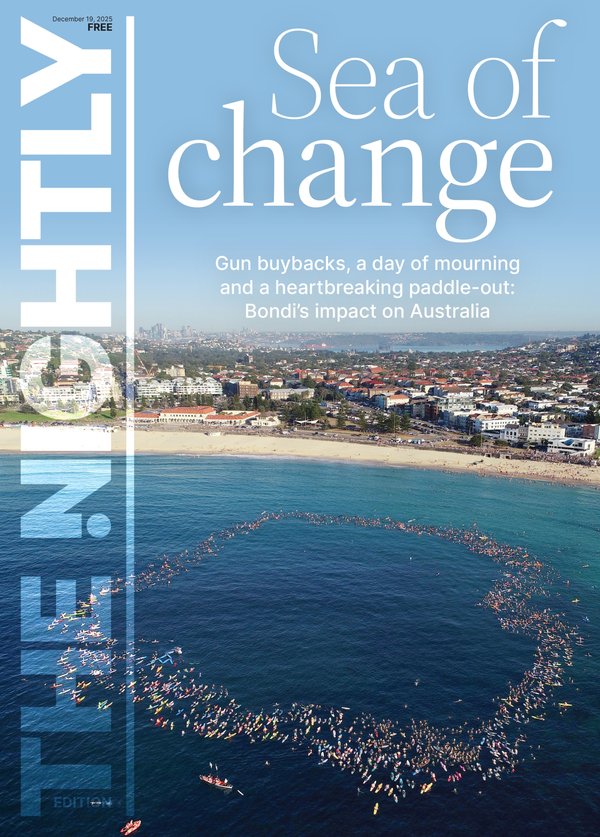THE WASHINGTON POST: US ramps up diplomacy around Gaza ceasefire as JD Vance travels to Israel
The Trump administration has ramped up diplomatic efforts to bolster a shaky ceasefire in the Gaza Strip, with Middle East envoy Steve Witkoff and Jared Kushner, the son-in-law of the president, meeting with senior officials in Israel on Monday, a day after the Israeli military killed dozens of people in strikes it said were a response to a Hamas attack.
Mr Witkoff and Mr Kushner met with Prime Minister Benjamin Netanyahu, according to an Israeli government spokeswoman, and Vice President JD Vance is expected in Israel on Tuesday, local time. The visit Monday was aimed at mediating some of the early disputes over the terms of the ceasefire, which went into effect October 10. The agreement - the first phase of a broader US-backed plan to end the war and reconstruct Gaza - calls for a halt to all combat operations, a partial Israeli withdrawal, the return of hostages to Israel in exchange for the release of Palestinian prisoners and an increase in humanitarian aid.
Almost immediately, the two sides accused each other of violating the agreement, and on Sunday, Israel said it carried out strikes across Gaza after its troops came under fire in Rafah, an area it still controls. Later, the military announced that two soldiers had been killed. According to local health authorities, the strikes killed 45 people in Gaza.
Sign up to The Nightly's newsletters.
Get the first look at the digital newspaper, curated daily stories and breaking headlines delivered to your inbox.
By continuing you agree to our Terms and Privacy Policy.Israel has also said it believes Hamas is deliberately holding back the bodies of some deceased hostages, while Hamas, which has returned 12 out of 28 bodies, says Israel is barring the entry of equipment and personnel it needs to recover and exhume the remains. Another body was transferred to Israel late Monday, the military said, but it cautioned that the remains were awaiting identification.
Israel has also refused to open the Rafah crossing on Gaza’s border with Egypt, a key part of the deal that is supposed to facilitate medical evacuations and the return of some Palestinians who fled during the war. According to the World Health Organization, about 15,000 people are on the agency’s priority list for evacuation.
“They’re calling it a ceasefire in the media as if the war is officially over, but that’s not how it feels to us,” Dalia Zeyad, a Palestinian from Gaza, said in an interview from the Rimal neighborhood of Gaza City. “The attacks will continue,” she said. “Just less frequently.”
On Monday, journalists and medics reported the deaths of four people in eastern Gaza City, including two they said were killed by sniper fire and another two who were hit by an air or artillery strike.
In a statement, the Israel Defence Forces said that it fired on two groups of “terrorists” in the same area, after the individuals “crossed the yellow line” behind which Israeli forces have withdrawn as part of the deal. But Palestinians in Gaza say it is not clear to them where the line is located. Also Monday, the IDF said it was beginning to mark the yellow line “to establish tactical clarity on the ground.”
The statement said the markings consist of a concrete barrier with an 3.3m pole, painted yellow. The barriers are being placed every 200 metres, the IDF said.
Mr Vance, during his two-day visit to Israel, is expected to speak with Mr Netanyahu about the next phase of the ceasefire plan - the details of which have not been negotiated and include the thornier, long-term issues for a permanent end to the war, according to a person familiar with his schedule in Israel, speaking on the condition of anonymity to discuss sensitive plans. That conversation is expected to focus on a multinational force to deploy to Gaza and the disarmament of Hamas, they said.
Speaking to reporters Monday, President Donald Trump threatened again to “eradicate Hamas” for its deadly clampdown on armed rivals in the enclave, though it was unclear if those actions were a violation of the ceasefire.
“They’re going to be very good, they’re going to behave, they’re going to be nice, and if they’re not, we’re going to go and we’re going to eradicate them,” Mr Trump said. When asked if that meant US troops would be deployed to Gaza, Mr Trump said, “we don’t need to.”
“Israel would go in in two minutes,” he said. “But right now ... we’re going to give it a little chance, and hopefully there will be a little less violence.”
In Gaza, residents said an uneasy calm appeared to be holding after Sunday’s deadly strikes. But few if any people trusted it would last.
“I feel like Gaza is hanging by a thread. There’s no safe place left here,” said Ahmed Abu al-Qumsan, who was displaced to the Zawaida area in central Gaza. “Even when they say there’s a ceasefire, people don’t relax - we’ve learned not to,” he added. “There will always be violations; there will always be airstrikes. It’s like living on borrowed time.”
© 2025 , The Washington Post
